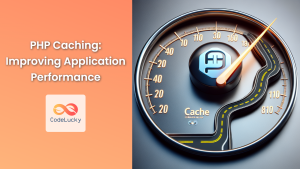PHP's output control functions provide developers with powerful tools to manage how and when content is sent to the browser. In this comprehensive guide, we'll dive deep into output buffering and flushing, exploring their practical applications and demonstrating how they can enhance your PHP applications.
Understanding Output Buffering
Output buffering is a technique that allows you to capture and manipulate output before it's sent to the browser. Instead of immediately sending each piece of output, PHP stores it in a buffer, giving you the opportunity to modify, discard, or send it at a later time.
Why Use Output Buffering?
🚀 Performance Optimization: By buffering output, you can send content to the browser in larger chunks, potentially reducing the number of network packets and improving performance.
🔄 Header Manipulation: Output buffering allows you to modify headers even after some content has been generated, which is impossible once any output has been sent.
🎨 Content Modification: You can alter the entire page content before sending it to the browser, enabling techniques like template systems and content compression.
🐛 Error Handling: Buffering helps prevent partial page renders when errors occur, allowing you to display a complete error page instead.
Basic Output Buffering
Let's start with a simple example to demonstrate how output buffering works:
<?php
// Start output buffering
ob_start();
echo "Hello, ";
echo "World!";
// Get the contents of the buffer
$output = ob_get_contents();
// Clean (erase) the output buffer and turn off output buffering
ob_end_clean();
echo "The buffered content was: " . $output;
?>
In this example, we:
- Start output buffering with
ob_start(). - Echo some content, which gets stored in the buffer instead of being sent to the browser.
- Retrieve the buffer contents with
ob_get_contents(). - Clear the buffer and end output buffering with
ob_end_clean(). - Finally, we echo the buffered content.
Output:
The buffered content was: Hello, World!
Manipulating Buffered Content
One of the most powerful aspects of output buffering is the ability to manipulate content before sending it to the browser. Here's an example that demonstrates this:
<?php
ob_start();
echo "<h1>Welcome to CodeLucky.com</h1>";
echo "<p>This is some sample content.</p>";
// Get the current buffer contents and delete output buffer
$content = ob_get_clean();
// Modify the content
$modified_content = str_replace('CodeLucky.com', '<strong>CodeLucky.com</strong>', $content);
// Add some additional content
$modified_content .= "<p>Modified at: " . date('Y-m-d H:i:s') . "</p>";
// Output the modified content
echo $modified_content;
?>
In this example, we:
- Start buffering and output some HTML.
- Use
ob_get_clean()to get the buffer contents and clear the buffer in one step. - Modify the content by making "CodeLucky.com" bold.
- Add a timestamp to the content.
- Output the modified content.
Output:
<h1>Welcome to <strong>CodeLucky.com</strong></h1>
<p>This is some sample content.</p>
<p>Modified at: 2023-06-15 14:30:45</p>
Nested Output Buffering
PHP allows you to nest output buffers, which can be useful for more complex scenarios. Here's an example:
<?php
ob_start();
echo "This is the outer buffer. ";
ob_start();
echo "This is the inner buffer. ";
$inner_content = ob_get_clean();
echo "Inner buffer contained: " . $inner_content;
$outer_content = ob_get_clean();
echo "Outer buffer contained: " . $outer_content;
?>
Output:
Outer buffer contained: This is the outer buffer. Inner buffer contained: This is the inner buffer.
In this example, we create nested buffers, demonstrating how you can work with multiple levels of output buffering.
Flushing Output
While buffering is useful, there are times when you want to send output immediately. This is where flushing comes in. The flush() function attempts to force sending of all output to the browser.
Here's an example that demonstrates flushing:
<?php
ob_start();
for ($i = 1; $i <= 5; $i++) {
echo "Counting: $i<br>";
ob_flush();
flush();
sleep(1);
}
ob_end_flush();
?>
In this script:
- We start output buffering.
- In a loop, we echo a count, flush the output buffer with
ob_flush(), and then attempt to send the output to the browser withflush(). - We use
sleep(1)to pause for a second between each count. - Finally, we end output buffering and flush any remaining content.
This script will output the count one number at a time, with a one-second delay between each number. However, it's important to note that the effectiveness of flush() can vary depending on the server configuration and the client's browser.
Practical Applications
Let's explore some practical applications of output buffering and flushing in real-world scenarios.
1. Implementing a Simple Template System
Output buffering can be used to implement a basic template system. Here's an example:
<?php
function render_template($template, $data) {
ob_start();
extract($data);
include $template;
return ob_get_clean();
}
$user_data = [
'name' => 'John Doe',
'email' => '[email protected]'
];
$content = render_template('user_template.php', $user_data);
echo "<h1>User Profile</h1>";
echo $content;
?>
And here's what user_template.php might look like:
<div class="user-profile">
<p>Name: <?php echo $name; ?></p>
<p>Email: <?php echo $email; ?></p>
</div>
This approach allows you to separate your HTML templates from your PHP logic, making your code more maintainable.
2. Compressing Output
Output buffering can be used in conjunction with PHP's output compression functions to reduce the size of the content sent to the browser:
<?php
ob_start("ob_gzhandler");
echo "<h1>Welcome to CodeLucky.com</h1>";
echo "<p>This is a long paragraph of text that will be compressed before being sent to the browser. ";
echo "Compression can significantly reduce the amount of data transferred, especially for text-heavy pages.</p>";
ob_end_flush();
?>
In this example, ob_gzhandler is used as a callback function for ob_start(). This function will automatically compress the output if the browser supports it.
3. Debugging with Output Buffering
Output buffering can be particularly useful for debugging, especially when working with functions that directly output content. Here's an example:
<?php
function debug_output($func) {
ob_start();
$func();
$output = ob_get_clean();
echo "<pre>";
echo htmlspecialchars($output);
echo "</pre>";
}
debug_output(function() {
var_dump($_SERVER);
});
?>
This function allows you to capture and display the output of any function, even if it directly echoes content. It's particularly useful for debugging functions like var_dump() or print_r().
Best Practices and Considerations
When working with output buffering and flushing, keep these best practices in mind:
-
🔍 Be Mindful of Memory Usage: Large output buffers can consume significant memory. Be cautious when buffering large amounts of data.
-
⚠️ Handle Errors Gracefully: Use output buffering in conjunction with error handling to prevent partial page renders on errors.
-
🚫 Avoid Nested Buffers When Possible: While nested buffers are supported, they can make code more complex and harder to debug.
-
🔒 Security Considerations: Be careful when modifying buffered content, especially if it includes user input. Always sanitize and validate data to prevent XSS attacks.
-
🏎️ Performance Impact: While output buffering can improve performance in many cases, excessive use of output control functions can also introduce overhead.
Conclusion
Output buffering and flushing are powerful tools in the PHP developer's toolkit. They provide fine-grained control over when and how content is sent to the browser, enabling a wide range of optimizations and techniques.
From implementing template systems to optimizing performance and facilitating debugging, mastering output control can significantly enhance your PHP applications. As with any powerful feature, it's important to use output buffering judiciously and with a clear understanding of its implications.
By incorporating these techniques into your PHP projects, you'll be able to create more efficient, flexible, and maintainable web applications. Happy coding, CodeLucky developers! 🚀💻



















